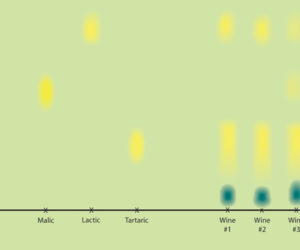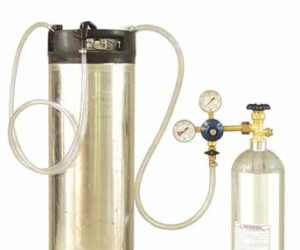Q I have been making wine at home for the past five years and my friends tell me I am pretty good! They like my wine and I thought about starting to sell it at our local farmers’ market. My question is, when do I cross the line from being just a home hobbyist (which I know is legal) to being a “winemaker” in the eyes of the public and presumably the government? I don’t want to do anything wrong but I’d like to explore my options.
Jennifer Michel
Calabasas, California
A There definitely has been an explosion in the number of people making and selling wine in this country! Every year, the number of brands listed with the TTB (Alcohol and Tobacco Tax and Trade Bureau — www.ttb.gov/wine) increases by the thousands. It’s no surprise that the US is now the number one wine market in the world and we’re the market everyone (and I mean everyone, from the Portuguese to the Chinese) want to be in. What that means is that there’s plenty of competition out there but it also means there are a lot of interesting opportunities. I believe that the non-traditional parts of the United States and Canada are in the beginning of a regional wine boom and that you may indeed have success marketing and selling your product locally. It takes a smart business plan, a good product and a lot of hard work (as many of my friends who have started their own brands will tell you) but it can pay off.
Back to your question, however. Technically anyone over the legal drinking age in their state (in the US) may make up to 200 gallons (757 L) of wine per year per household and not have to report anything to the government. That’s about 3.3 barrels, 83 cases or almost 1,000 bottles! Quite a lot, if you ask me. Make over that amount of wine, however, or sell any of your homemade products, and the government wants to start taking you seriously for tax purposes as well as to keep tabs on how many alcohol producers we have in our country. Long story short, the minute you sell your wine or grow your production above a certain level, the government starts to get involved. Farmers’ markets are great ideas for selling venues, but talk to your local farmers markets’ board first; often they are not allowed to sell alcoholic beverages due to their own by-laws or that of their location.
If you decide to get into commercial wine production you will want to do your homework. I recommend that everyone begin online at the TTB website, which has a link for those looking to become a bonded winery (http://www.ttb.gov/wine/federal_app.shtml). The ttb.gov website itself is quite an eye-opener into the complexities of the legal landscape you’ll be getting into. If you can afford it, I also suggest that you take a class at a local college or university extension office about wine marketing, winemaking or getting into the wine business. Increasingly, educational institutions in up-and-coming winegrowing regions are offering such courses. If you can’t get to one, and happen to live close to Kentucky, the TTB has what they call their TTB Expo in June (http://www.ttb.gov/expo09/index.html). The TTB also holds regional seminars but not every year. The TTB website lists when they are held.
Libraries and the Internet are also great places to start researching. Two of my favorite books on wine marketing just came out last year: Wine Marketing and Sales: Strategies for a Saturated Market by Dr. Liz Thach, Janeen Olsen and Paul Wagner and Wine Brands: Success Strategies for New Markets, New Consumers and New Trends by Evelyne Resnick. Both are worth picking up. The authors offer a thorough look at marketing strategy and will give anyone interested a great introduction to the terminology and technical knowledge needed to launch a wine brand.
Sometimes people in the industry say that making the wine is the easy part. It’s the selling that can be tough. There’s a lot of competition out there and small brands often have a really hard time getting distribution. But you may have a unique opportunity on your hands if you follow the rules and follow your good instincts.
Q I recently purchased two original wooden cases of “Smil-O Products Pure, Sweet, Grape Juice” at an estate sale. The original labels say 100% California Grapes Pure Juice and the company (Smil-O) was located in Aberdeen, Washington. These cases contain 4 gallons (15 L) each of red and white grape juice from the A. Joseph Company in NYC and were delivered to a bottling company in Syracuse, New York. The bottles have never been opened and still have the original corks. The boxes had never been opened until we bought them at the sale. The addresses are prior to zip codes and from the looks of the boxes and bottles, I am guessing they could be mid 20th century — late 1930’s-1940’s. I am trying to obtain any information to see if the juice could be of any use for making wine and/or would a wine collector/maker place any value on the boxes, bottles and labels. I would be happy to provide photos if you would find this helpful. This was such an unusual find and the boxes, bottles and labels (terrific graphics) are just so cool!
Karen Susko
Canastota, New York
A I can guarantee the contents of the bottles are completely useless for any winemaking application. It’s almost unheard of for a wine, let alone much more-perishable grape juice, to survive in any kind of good condition for that long. What you’ve got are essentially bottles of oxidized, browned and completely undrinkable grape juice. No one would pay for it from that point of view, unless you were perhaps a wine educator looking to teach your students about the ravages of time and oxygen on grape juice.
The boxes, bottles and labels however may well have some resale value for those that like old fruit crate labels, bottles or similar items. As far as value goes, it’s hard to tell. As with any collector’s item (and these wouldn’t be technically called “antiques” by most dealers, being that they are less than 100 years old), the better the condition and the higher the authenticity of the items, i.e. how close are they to their original state, the more you may be able to get for them. Since everything seems to be together and unadulterated, so to speak, this speaks well to this possibility.
Before I get you too excited, however, realize that you probably aren’t dealing with an item a lot of people would be interested in (aside from maybe some WineMaker magazine readers). Your bottles aren’t labels from famous Grand Cru vineyards and aren’t even from any well-known California company. A quick look for “Smil-O” grape juice on the Internet came up blank. Since supply and demand dictate price, I would guess that even though you probably have a scarce item (which would dictate higher price) the demand for your item is probably pretty low. Unless the artwork is spectacular enough to interest an historical collector, you may just want to enjoy your items yourself. I would suggest you do some browsing on collector or auction websites — eBay is the first that comes to mind. You could also try to find antique or collectibles stores that specialize in fruit crate labels or wine ephemera. These buyers are more specialized and, if you decide to try to find a buyer, will probably return a higher price than a general marketplace auction house like eBay.
UC-Davis graduate and professional winemaker Alison Crowe has been answering hundreds of your winemaking questions as the “Wine Wizard” since 1998. Her Wizard columns have been collected in The Winemaker’s Answer Book which is available at winemakermagstore.com. Do you have a question ? Send your inquiries to her at: [email protected]. Unfortunately, Alison cannot respond personally.







